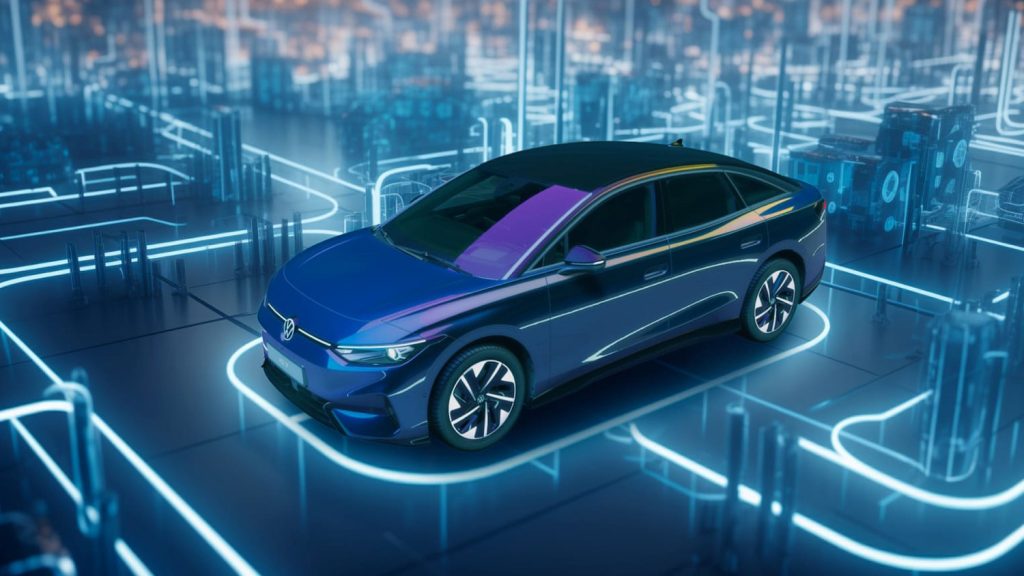As more car sales are conducted online and auto brands scramble to up their digital marketing game, demand for 3D models is outstripping supply. OpenUSD could help tackle the challenge, writes Jason Collins of ZeroLight
The 3D vehicle model pipelines that exist within automotive OEMs are in urgent need of some digital plumbing.
The reality is, they aren’t able to keep up with the sheer amount of different content, in different formats, that modern car-buying journeys require. It’s been clear for some time that demand downstream for 3D models has been outpacing the average pipeline’s set-up and capabilities.
So, what’s behind this growth in demand for visual automotive marketing content? One big shift is that 92% of car buyers are now likely to conduct some element or the entirety of their purchase journey online, which means that there’s more pressure than ever for auto brands to maximise their digital discoverability with engaging content.
The challenge for automotive brands is not only producing enough of this visual content, but also managing the 3D models that are needed to create it.
To generate this content, brands need to supply source 3D models in lots of different formats for different agencies, teams, software and processes that exist in their content generation ecosystem – not just once, but multiple times, in order to encompass model year updates, fixes and enhancements.
However, at up to three months of manual work per conversion, per vehicle, you end up with a pretty scary picture of the scale and duplication of effort that’s required.
It’s the reason why many OEMs limit themselves to a select number of graphics engines or formats, opt for a wider selection at considerable cost, or agree to compromise on the scope of their campaigns.
In a webinar that ZeroLight recently hosted with Volkswagen’s Head of Digital Car Visualisation, he revealed that 70% of their team’s budget is dedicated to converting master vehicle models into multiple formats and engines.
In an ideal world, we would flip this ratio, with 70% of a team’s budget dedicated to creating innovative customer touchpoints that can generate a return, with the remaining 30% spent upstream on the preparation of 3D assets.
Innovation with OpenUSD
Thanks to innovations with OpenUSD, this ‘ideal world’ is almost within reach. Auto visualisation specialists now have a game-changing solution that can upgrade and future-proof their pipelines, and it’s backed by big hitters including Pixar, NVIDIA, Apple and Adobe.
OpenUSD is a universal data framework that has enormous potential for the industry. It means that brands essentially only need to convert their original CAD data once, as that one file is then interoperable across all engines and 3D software. It’s also non-destructive, so it can be transported in and out of different applications without losing any data.
Visualisation teams can now be more agile and build amazing experiences and content across lots of platforms, without being restricted by model conversion costs
This might sound too good to be true, but the promise of a format-agnostic digital pipeline for automotive is here and it’s already been proven in other industries.
Visualisation teams no longer need to work in siloed teams or tie themselves into a single engine, making them vulnerable to price hikes or inadequate technical roadmaps.
Instead, they can be more agile and build amazing experiences and content across lots of platforms, without being restricted by model conversion costs.
The challenge for car makers now is how they make the most of this opportunity. Building a single model in OpenUSD is achievable, but converting and maintaining an entire catalogue of models is another matter.
And the challenge is not purely an operational one; there are cultural and mindset changes needed for the adoption of a universal model pipeline that need to be nurtured.
What would help already stretched teams speed up the transition to a universal model pipeline is removing the manual effort required.
This could be done with a smart model converter, which takes the geometry, materials, and animation data from the master digital twin and automatically transforms it into OpenUSD.
Time to accelerate
This approach would accelerate the process from months to hours for each model, while simultaneously optimising elements such as texture data, objects and hierarchies.
Brands would quickly be able to experience the advantages of moving digital twins seamlessly between applications and teams, without the obstacle of setting up specific materials and configurations for each one.
At ZeroLight, we’ve already started to roll out our very own smart model converter for an exclusive group of global OEMs. The results are exciting for an industry intent on updating its pipeline for the digital age.
About the author: 
Jason Collins is Chief Product Officer at ZeroLight.
He has over a decade of experience in automotive visualisation, working with the world’s largest OEMs on scaled solutions from model pipelines to consumer experiences.
This article first appeared in DEVELOP3D Magazine
DEVELOP3D is a publication dedicated to product design + development, from concept to manufacture and the technologies behind it all.
To receive the physical publication or digital issue free, as well as exclusive news and offers, subscribe to DEVELOP3D Magazine here






